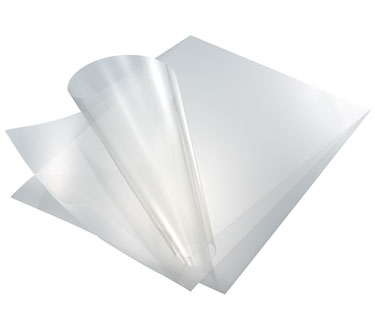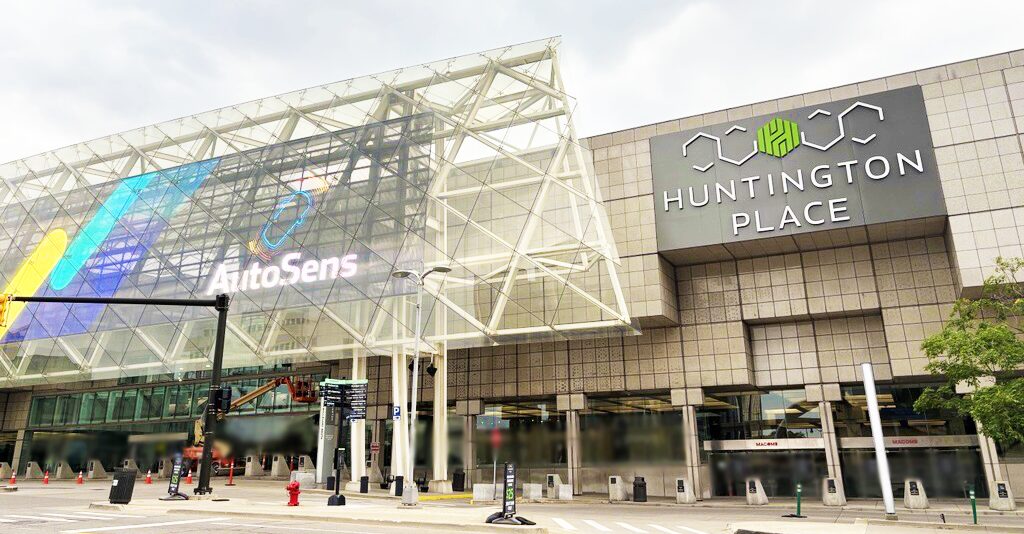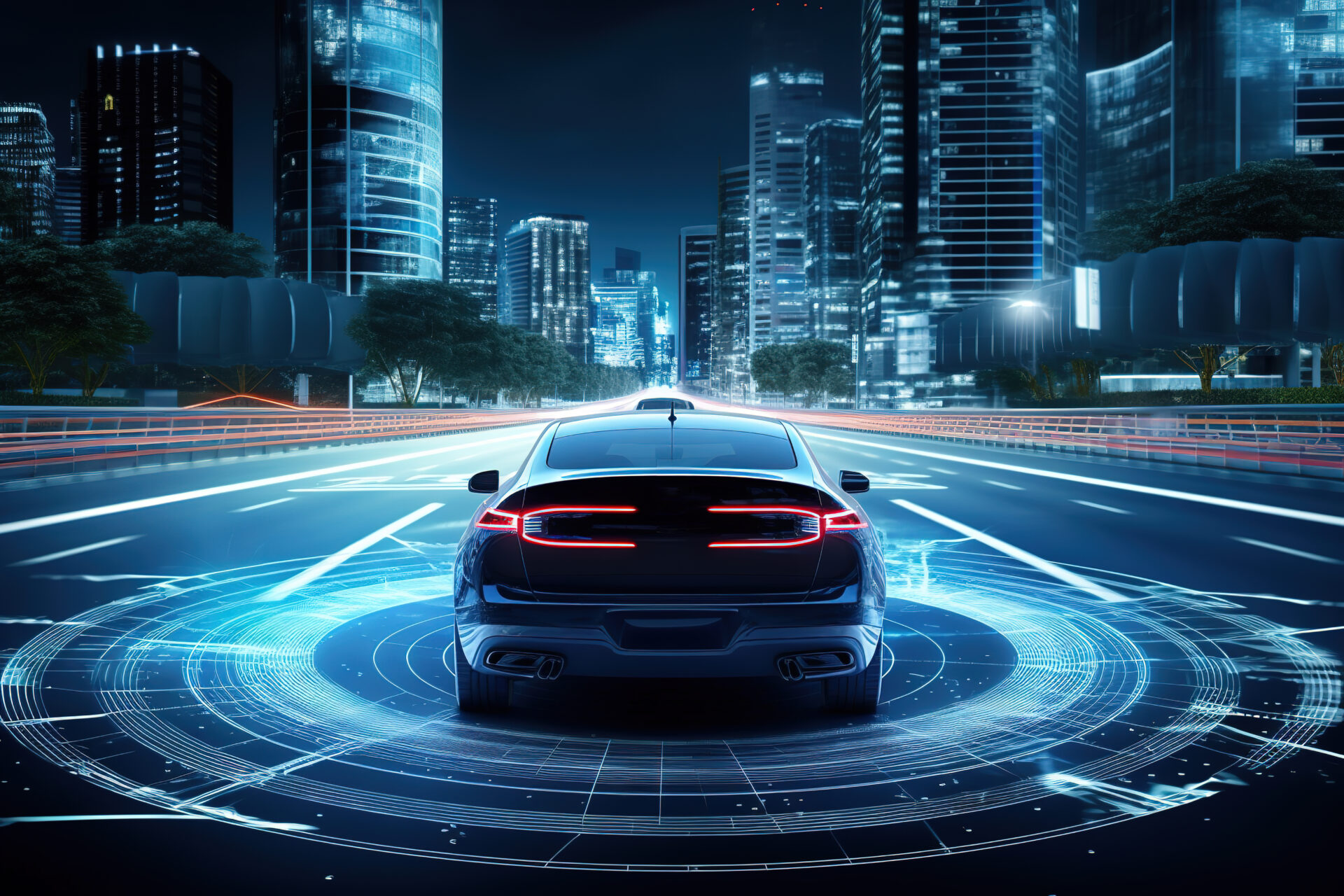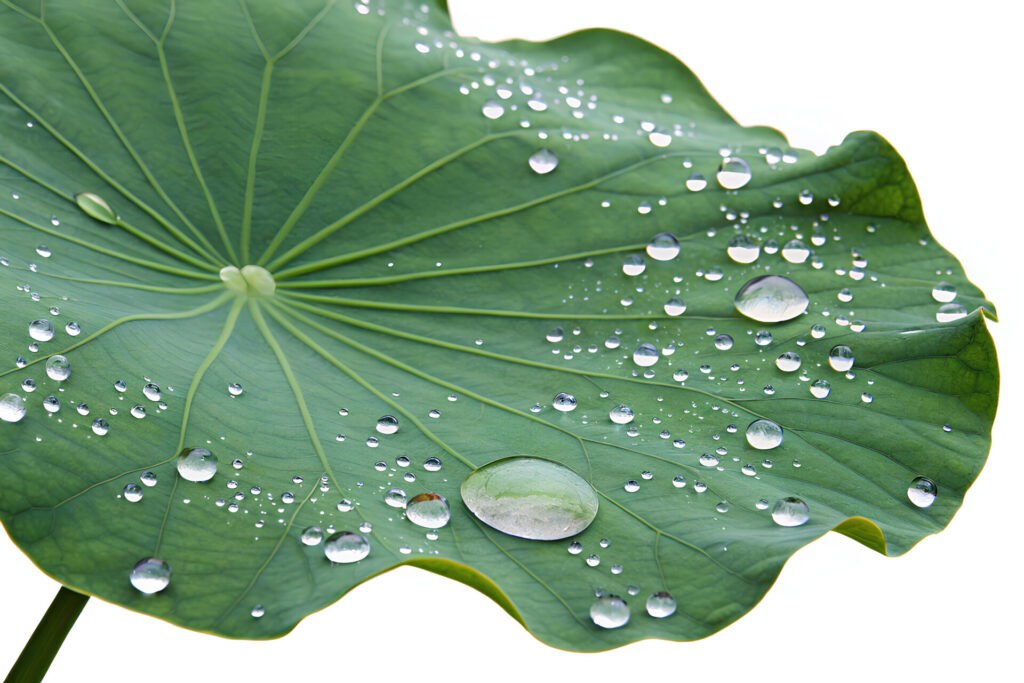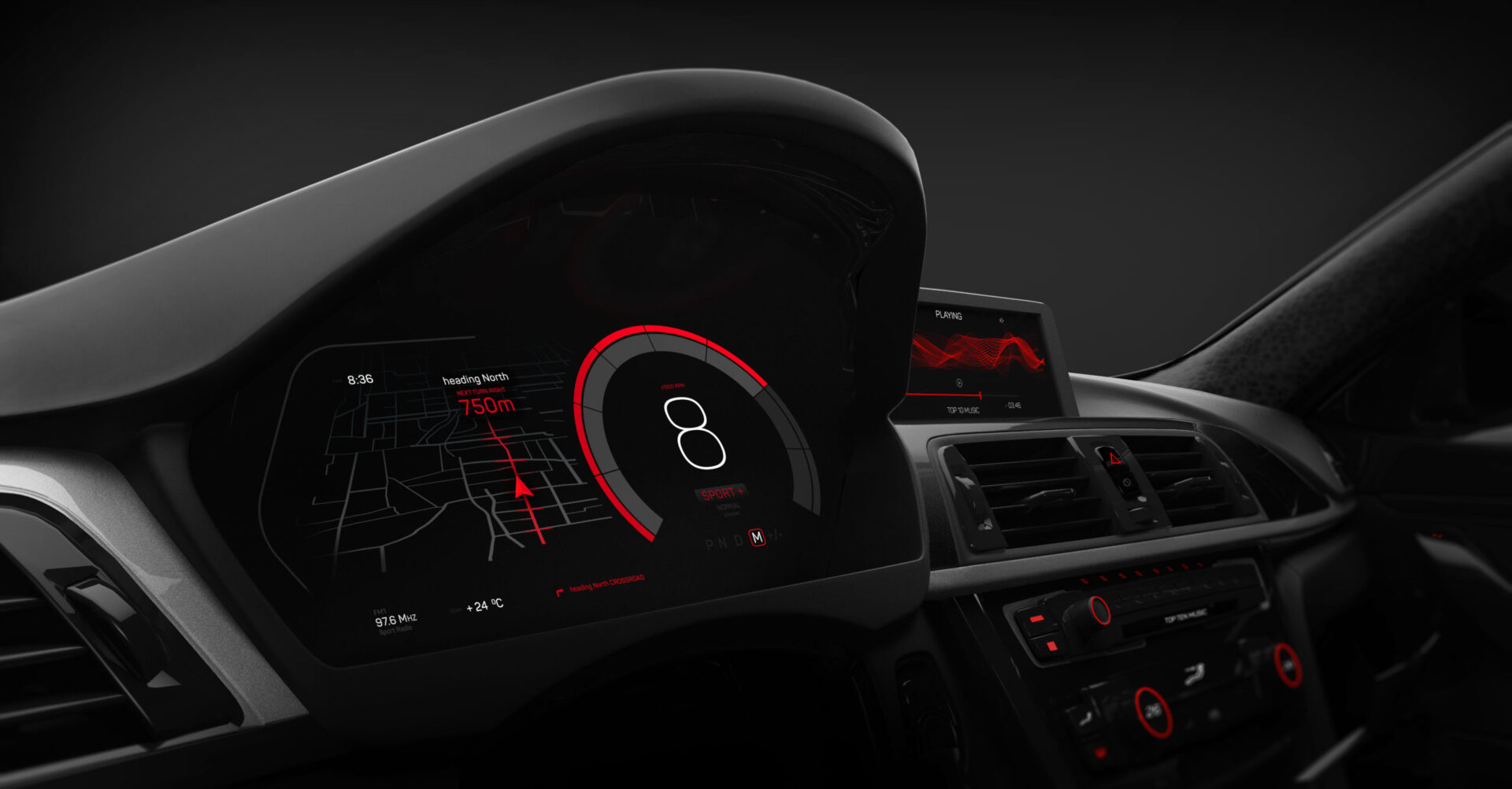
- Optical Products
Improvement of automotive interiors with light-resistant anti-reflection film
目次
The development of light-resistant anti-reflection film
When walking down the street, you might see vehicles with yellowed headlights. This is due to color degradation caused by UV light. The polycarbonate resin that covers headlights undergoes a chemical change when exposed to UV light for a prolonged period of time. That is why it is so important to protect automotive interiors from UV exposure.
UV light can also change the appearance of displays used in car navigation systems. Navigation systems are typically installed at specific angles or are equipped with shades to avoid direct exposure to sunlight.
Dexerials offers anti-reflection film for in-vehicle displays that reduces reflections (glares) and improves visibility. The film provides greater interior design freedom. It allows for smaller shades and greater flexibility in positioning and angle of installation. Dexerials also believes it is important that displays match the “piano black” look used in the interiors of many luxury cars. This is important not only to ensure design consistency but also to preserve the quality of color despite exposure to UV light.
This article focuses on the technological elements of the adhesive layer of anti-reflection film. The adhesive layer is essential as it adheres the film to the display. Traditionally, the focus has been placed on developing an adhesive strength that combines transparency and light resistance. However, Dexerials has now added black dye to the adhesive layer to further improve the sense of cohesion with the rest of the automotive interior. Although it was not possible to make the film completely black as needed to ensure visibility, it was possible to reduce its transparency to a certain extent, thereby improving the uniformity of the interior. It was also necessary to consider the possibility of the adhesive layer turning yellow under UV light.

Testing the light resistance of anti-reflection film
Dexerials conducted an accelerated degradation experiment by projecting strong ultraviolet rays onto surfaces for 300 hours to test the UV light resistance of anti-reflection films. The following five samples were compared: (1) An adhesive layer without any colorant, (2) an adhesive layer mixed with black pigment, (3) an adhesive layer mixed with black dye, and (4) and (5) were adhesive layers with different densities and transmittance rates. The amount of dye and pigment was adjusted so that the light transmittance was always 74% and 53%.
Both pigments and dyes were tested because the particles disperse differently when added to certain materials. Pigments disperse and diffuse like larger particles, while dyes disperse by dissolving in resin like sugar dissolves in water.
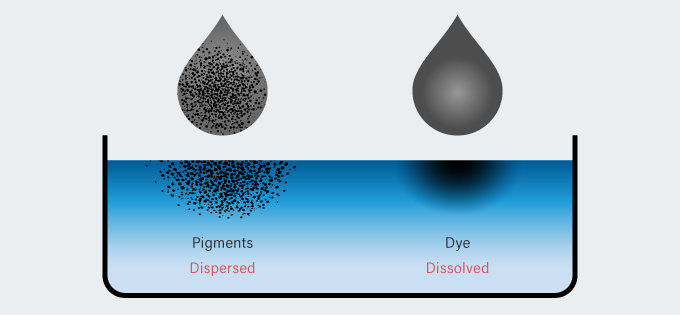
The transmittance rate was divided into two categories, 74% and 53%, to see the degree of color change depending on the intensity of the black color.
DIN75220, a light resistance testing standard widely adopted by European automobile manufacturers, was used for the test. The samples were exposed to ultraviolet light at four times the intensity for 300 hours and tested every 100 hours.
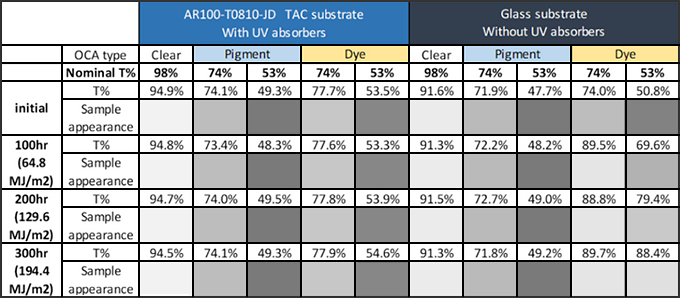
In the above chart, the left half shows the results with anti-reflection film (TAC substrate with UV absorbers), and the right half shows the results with glass substrates (without UV absorbers). Each substrate was tested with a clear adhesive, pigmented adhesive (2 types), and dyed adhesive (2 types). Higher percentages indicate a higher light transmission rate and degree of fading of the black pigment/dye.
Expanding possibilities beyond automotive interiors: The future of displays
As seen from the glass substrate results on the right side of the above chart, the color (transmittance) of the pigmented adhesives hardly changed, while the dyed adhesives faded and became lighter due to the effects of UV light.
The reason why there was almost no change in the pigmented colorants is that the pigment is inorganic and unaffected by UV light. On the other hand, the organic dye particles were shown to be susceptible to changes in the chemical structure due to the effects of UV light.
At the same time, the transmittance rate of the dyed anti-reflection film stayed almost the same, which was found to be effective in preventing UV light-induced color degradation.
In our experiment, we found that the dye was weak against UV light. However, there is no easy answer to the question of which is better for piano black displays: a pigmented adhesive material or a dyed adhesive material. Pigments have larger particles, so when light hits the inside of the material, it scatters. Adhesive materials that use dye do not scatter light, so they appear deep black and glossy.
In the past, automotive displays were typically placed on the back of dashboards where they would not be exposed to direct sunlight to avoid the effects of UV light.
The results of this experiment show that it is possible to create piano black displays with sufficient sunlight resistance by combining anti-reflective film with a dyed or pigmented adhesive material. If displays can be installed in areas that are typically exposed to direct sunlight, it will greatly expand the possibilities for automotive interior design.
Dexerials will continue its research and development as displays expand into new applications.
Related articles
- SHARE

We provide materials regarding our products and manufacturing technologies.
Feel free to download it for free.
Download Materials
We provide materials regarding our products and manufacturing technologies.
Feel free to download it for free.
Download Materials



